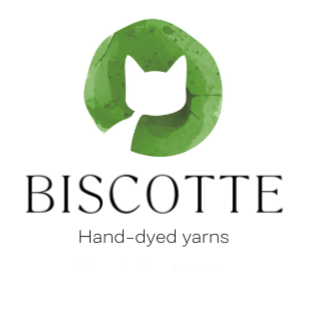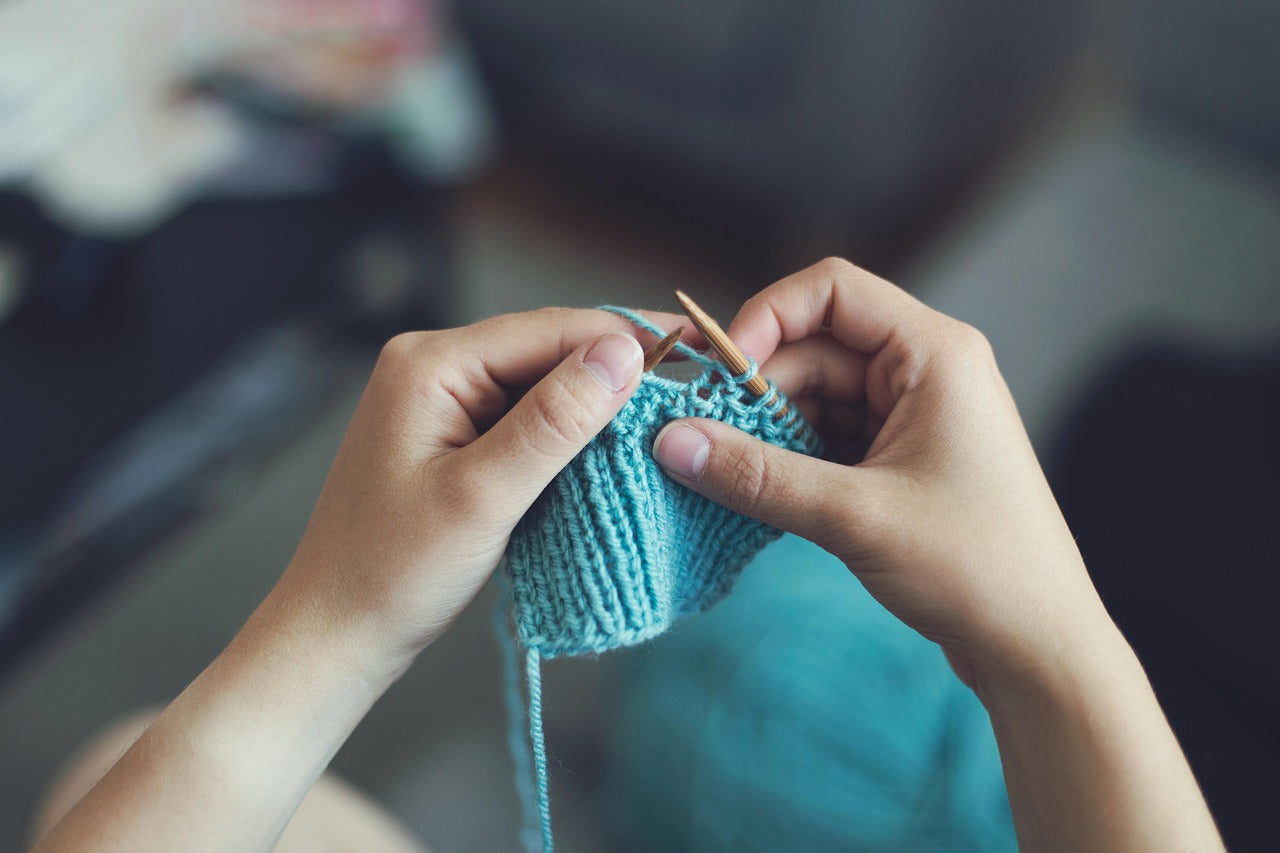In a world where fast fashion reigns supreme, a trend that is more respectful of the environment and people is emerging: slow fashion. This movement, which promotes a more conscious and sustainable approach to fashion, has found particular resonance in the world of hand knitting, crochet, spinning, and felting. Let's find out how these craft practices fit perfectly into this ethical approach and how you too can participate in this textile revolution while expressing your creativity.
What is Slow Fashion?
Slow fashion is a concept that contrasts with fast fashion and is part of the slow movement. It advocates manufacturing that respects the environment, animals, and the people who work in the production chain. As such, unlike industrial fashion practices, slow fashion involves local artisans and the use of environmentally friendly materials, with the aim of preserving craftsmanship and the environment and, ultimately, providing value to consumers and producers.
The slow fashion mantra is simple: consume less and better! This approach is based on several pillars that demonstrate that another way of consuming is possible:
- It opposes fast fashion, which is harmful to people and the planet
- It encourages more reasonable consumption to combat overproduction.
- It offers sustainable, high-quality products with a low social and climate impact.
A Brief History of Slow Fashion
The history of slow fashion dates back to the 1990s, when environmental concerns began to penetrate the fashion industry:
In March 1990, the New York Times and Vogue published articles on the environmental trend in the fashion world. In the summer of 1990, British fashion designer Katharine Hamnett, often recognized as one of the first to combine environmental activism and fashion, gave a speech on the environmental impacts of fashion at the United Nations.
 Overdressed: The Shockingly High Cost of Cheap Clothing and raised awareness of the drawbacks of the fast fashion industry.
Overdressed: The Shockingly High Cost of Cheap Clothing and raised awareness of the drawbacks of the fast fashion industry.
The term "slow fashion" was coined by Kate Fletcher, a researcher, consultant, and design activist, in a 2007 article in The Ecologist, where she compared the eco/sustainable/ethical fashion industry to the slow food movement.
The concept of slow fashion borrows heavily from the Slow Food movement founded by Carlo Petrini in Italy in 1986. "Slow Fashion October" is a movement started by Karen Templer of the Fringe Association blog to start a conversation about ethical and sustainable fashion. This initiative invites participants to take a closer look at their style and wardrobe.
The Environmental Impact of Fast Fashion
To understand the importance of slow fashion, it is essential to measure the disastrous impact of fast fashion on our planet:
Alarming Figures
The fashion industry is one of the world's biggest polluters. According to the UN, it is responsible for around 10% of global CO₂ emissions and around 20% of global wastewater pollution.
Textile production is responsible for approximately 20% of global water pollution, primarily due to the use of dyes and other finishing products. A single wash of polyester clothing can release 700,000 microplastic fibers, which can then end up in the food chain.
Between 2000 and 2015, clothing production doubled, while the average use of a garment decreased. Less than half of the used clothing is collected for reuse or recycling, and only 1% is recycled into new clothing.
Excessive Water Consumption
The production of textiles, particularly cotton, requires a substantial amount of water. The production of a single cotton T-shirt—from the field to the store—can consume up to 2,700 liters of water, which is about the amount of water an adult drinks in nearly three years.
Chemical Pollution
A wide range of chemicals are used in textile production, including dyes, bleach, and softeners. These substances seep into rivers and soil, destroying entire ecosystems. Many of these chemicals are toxic and pose serious risks to humans and the environment.
Hand Knitting: A Pillar of Slow Fashion
Hand knitting fits perfectly into the slow fashion philosophy for several fundamental reasons:
Intentional and Limited Production
Those who knit their own clothes do so with intention and according to their needs. This prevents excess clothing from being thrown away after only a few months. Each hand-knitted piece is made with care and love, and as a result, it is cherished and worn for many years.
As the blog Knit Pause explains: "By choosing to make our own clothes, we understand the slowness of the process. We understand the value of what comes off our needles, the need to take care of it and wear it again and again."
Durability and Quality
Handmade garments can easily rival mass-produced clothing in terms of quality. High-quality yarns, good construction, and careful craftsmanship result in garments that stay looking good longer than industrially manufactured knits. What's more, handmade items can be easily repaired if something goes wrong.
Plassard yarns adds: "Hand-knitted garments are generally stronger and of better quality than fast fashion items. This means they last longer and fewer garments are thrown away, which means less waste. What's more, the process of making a hand-knitted garment reduces the risk of wear and tear because the yarn and seams are of better quality and more durable."
Valorization and Appreciation
In addition to promoting good mental health, knitting is a wonderful hobby, but it takes time and effort. You can't knit a sweater in just three afternoons. Because of the time invested, knitted garments are valued differently. They are not impulsively discarded in favor of a cheap alternative bought in a store.
As Pascuali points out: "For me, sustainable fashion in the world of knitting is about building these bridges, bringing us together and adding value to our fibers, our yarns and our knits."
Crochet, Spinning, and Felting: Other Expressions of Slow Fashion
Beyond knitting, other craft practices fit perfectly into the slow fashion approach:

Crochet
Like knitting, crochet allows you to create unique, durable, and personalized pieces. This technique offers great creative freedom and can be used to make a variety of clothing, accessories, and decorative items.
The "Let's Talk About Crochet Slow Fashion" movement encourages crocheters to think about their practice from a perspective of sustainability and ethics. It highlights the beauty of crochet creations as an alternative to fast fashion products.

Spinning
Spinning yarn is the first step in the textile creation process. By spinning our own yarn, we have complete control over the quality and origin of the raw material. This practice allows us to promote local yarns, which often come from small farms that respect animal welfare.
Hand spinning also allows you to create unique yarns with textures and colors that are impossible to find in stores. It is a way to preserve ancestral know-how while creating sustainable materials for your knitting or crochet projects.

Felting
Felting is a technique that transforms yarn into a non-woven fabric without the need for spinning. There are two main methods: wet felting (using water and soap) and needle felting (dry felting).
This practice fits perfectly into a slow fashion approach because it allows raw wool, which is often local, to be used directly to create unique, durable, and biodegradable pieces. Felting can be used to make clothing and accessories, as well as decorative and artistic objects.
Specific examples of slow fashion projects
For knitting
An inspiring example of a slow fashion knitting project is the creation of a timeless cardigan in local wool. By choosing a wool produced close to home, you reduce the carbon footprint of transportation and support the local economy. Choose a classic model that will last through the seasons and years, in a neutral color that will match the rest of your wardrobe.
Another interesting project is the "Slow Sweater": a basic sweater that you can personalize to suit your tastes and needs. The idea is to create a piece that you'll wear for years, even decades, and that you can easily repair if necessary.
For Crochet
An emblematic project of slow fashion crochet is the mesh bag, a sustainable alternative to plastic bags. Made from organic cotton or linen, this bag is not only eco-friendly but also very practical for everyday shopping.
Crocheted garments, such as summer tops and vests, are also excellent slow fashion projects. Their openwork structure makes them light and adaptable to different body shapes, while their handmade production guarantees their uniqueness.
For Spinning and Felting
A project combining spinning and knitting might be to create a shawl from wool you've spun yourself. This process, from fleece to finished product, connects you deeply to your creation and makes you appreciate every step of the way.
For felting, creating felted wool slippers is an excellent slow fashion project. Not only are these slippers comfortable and durable, they also use wool very efficiently, without generating waste.
Tips for adopting the Slow Fashion Approach in your projects
For knitting and crochet
- Choose natural, sustainable fibers: opt for wool, organic cotton, linen or hemp rather than synthetic fibers.
- Look for certifications: Labels like GOTS (Global Organic Textile Standard) guarantee high environmental standards throughout the supply chain.
- Opt for timeless designs: Create pieces that will remain fashionable beyond a single season.
- Learn to repair: Master mending techniques to extend the life of your creations.
- Share your know-how: Teach others how to knit or crochet to spread the values of slow fashion.
For spinning
- Support small wool producers: Buy your raw wool directly from local breeders who practice agriculture that respects animals and the environment.
- Experiment with less common fibers: Try spinning fibers like alpaca, mohair or even plant fibers like flax.
- Create unique yarns: Take advantage of your control over the process to create yarns with textures and colors impossible to find on the market.
- Dye naturally: Use plants and other natural materials to dye your yarns, avoiding harmful chemicals.
For felting
- Use local wool: Certain breeds of sheep, such as the Corriedale, produce wool that is particularly well-suited to felting.
- Recover offcuts: Felting allows you to use even the smallest pieces of wool, reducing waste.
- Combine techniques: Combine felting with other techniques such as knitting or sewing to create unique, long-lasting pieces.
- Create multifunctional objects: A felted rug can also serve as thermal or sound insulation, maximizing its usefulness.
Conclusion: The Transformative Power of Handmade
Slow fashion is not just a passing trend, it is a real paradigm shift in our relationship with the clothes and objects that surround us. By adopting practices such as knitting, crocheting, spinning, or felting, we become agents of this change.
These textile arts reconnect us with the material, make us appreciate the time needed for creation, and allow us to express our creativity while respecting the planet and those who live on it. Every stitch, every point, every fiber spun or felted is a small step towards a more sustainable and conscious world.
So, whether you're a beginner or an expert, why not pick up your needles, crochet hook, spinning wheel or felting needles and join this textile revolution? Your creativity is waiting for you, and the planet will thank you for it.
SOURCES
- Wikipédia. (2023). Slow fashion. https://fr.wikipedia.org/wiki/Slow_fashion
- Oxfam France. (2024). Slow fashion : qu'est-ce que c'est. https://www.oxfamfrance.org/magasins/la-slow-fashion-une-tendance-au-service-dune-mode-veritablement-ethique/
- Pascuali. (2025). Slow Fashion: Why Hand-Knitted Clothing Is a Great Contribution to Sustainability. https://www.pascuali.de/en-us/blogs/blog-knitting/slow-fashion-why-hand-knitted-clothing-is-a-great-contribution-to-sustainability
- Laines Plassard. (2024). Slow Fashion : Le tricot, une tendance éco-responsable. https://laines-plassard.com/slow-fashion-le-tricot-une-tendance-eco-responsable/
- Knit Pause. (2019). Mode durable et tricot durable. https://www.knitpause.com/fr/blog/2019/4/19/mode-durable-et-tricot-durable
IMAGES
- knitting - Image by Foundry Co from Pixabay
- Crochet - Image by wal_172619 from Pixabay
- Spinning - Image by Uwe Baumann àfrom Pixabay
- Felting - Image by Th G from Pixabay

